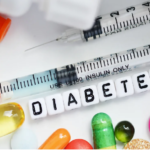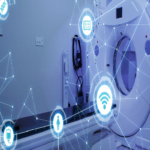Whether on a small scale in the form of physician practice implementing an EHR system or on a large scale with a healthcare organization establishing health information exchange (HIE), their success depends on the same thing. That is, the adoption of health IT comes down to buy-in which in turn comes down to having the right stakeholders around the table to ensure the support of all those impacted by the change in workflows.
At a national level, the challenge is no different, perhaps even clearer. “HIE is a team sport. What you see in the diversity of the team is that one stakeholder simply cannot be successful in HIE,” says Michael Matthews, President and Chair of Healtheway, borrowing a line from Dr. John Madison of Kaiser Permanente.
Last week, Healtheway, the organization tapped to take over the operation of the nationwide health information network (NHIN/NwHIN), announced its nine founding members who come from different parts of the healthcare industry.
“The founding members have been long-time supporters of standards-based interoperability and health information exchange on a scalable basis across the country,” explains Matthews. “When the membership corporation was then set up, it was an opportunity for them to come in as the original founding members. They really wanted to enlist and be part of the nationwide solution so that we can have ubiquitous health information exchange across the country.”
Those founding members actually build on a pre-exisintg network of 40 or more healthcare organizations already sharing network via the eHealth Exchange, known formerly as NwHIN Exchange. And both the founding members and participants play equally important roles in expanding the adoption of HIE more broadly.
“What we realized was that in addition to our core stakeholders in the network, stakeholders in the broader industrywere as deeply vested in the success of this as the participants,” explains Mariann Yeager, Healtheway’s Executive Director. “We needed a mechanism to be able to provide them an opportunity in a formalized, structured way to contribute.”
As Healtheway goes into deployment mode during the next six to nine months, its ability to lean on these private and public partners will be central to making HIE adoption as widespread and useful as the adoption of EHR systems. “It’s really not a question of if we will have nationwide secure, interoperable health information exchange. It’s really a matter of when and how quickly we can execute on that,” continues Yeager.
Executing on that means leveraging the reach and influence of its founding members.
“What we see around the corner of HIE is that we have to get the physicians and their technical infrastructure more integrated and interoperable,” argues Matthews. “It’s one thing to interoperate with 7,000 hospitals and systems and set the rules of the road, but then when you have 700,000 physicians it’s just a different kind of proposition. That’s where are diverse stakeholders with their own diverse stakeholders come in. We have to leverage that.”
While nationwide exchange may seem above and beyond the scope of a local physician practice, its aim is actually quite simple and may therefore prove more meaningful to these and other providers.
“What this is going to provide them is expanded connectivity, even potentially within their own community and extended service area,” adds Yeager. “It’s really about making health information exchange ubiquitous irrespective of technology platform or geographic boundaries. It’s going to enrich and expand the connectivity they may already have and expedite the availability of that connectivity by making a standardized way available on a wide-scale basis.”
The final piece that needs to fall into place is adapting the platform to the workflows of clinicians, a fundamental challenge for any successful health IT adoption. “They’re running on the treadmill as fast as they can and barely keeping up now, and then we ask them to do another thing in their busy day? It’s just not realistic,” says Matthews.



































